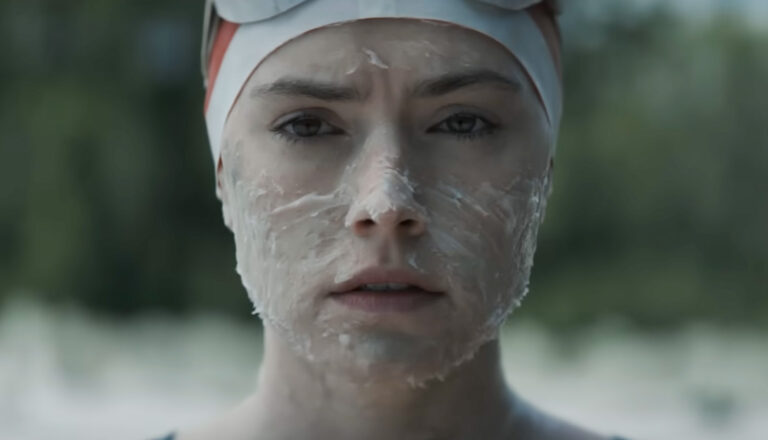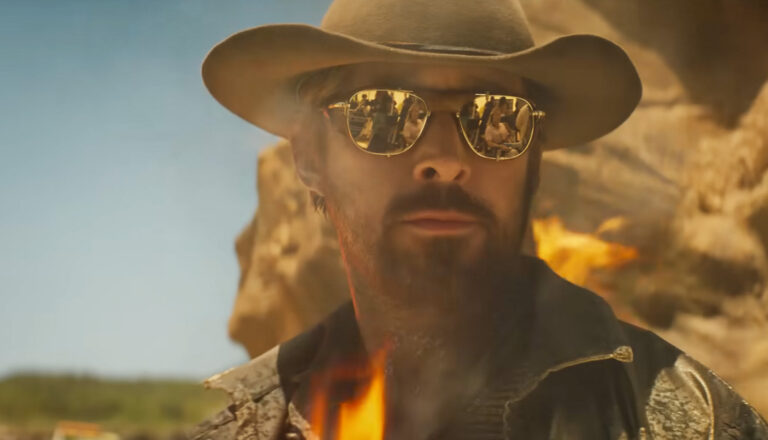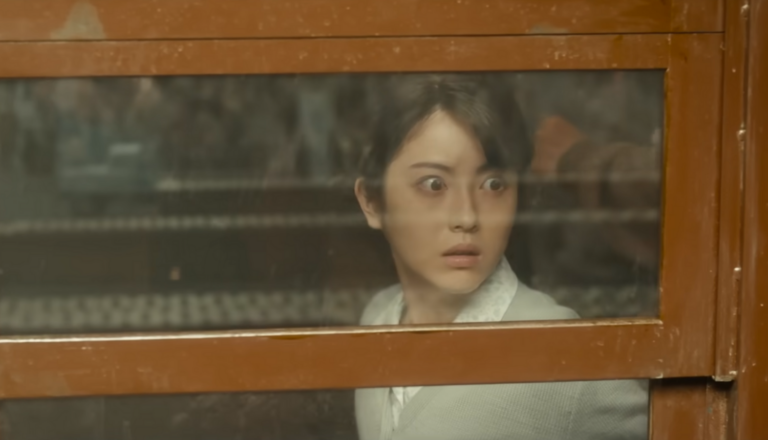Notice: All forms on this website are temporarily down for maintenance. You will not be able to complete a form to request information or a resource. We apologize for any inconvenience and will reactivate the forms as soon as possible.
Content Caution

Credits
In Theaters
- September 9, 2009
Cast
- Voices of Elijah Wood as 9; Christopher Plummer as 1; Jennifer Connelly as 7; John C. Reilly as 5; Martin Landau as 2
Home Release Date
- December 29, 2009
Director
- Shane Acker
Distributor
- Focus Features
Reviewer
Movie Review
In 9, the meek inherit the earth.
What an inheritance.
The world is a lifeless, smoking pile of rubble, the land laid waste by war between machine and man. The sky is a haze of brown-gray soot, the streets are littered with stone and metal shards and skeletons—the detritus of a civilization snuffed out. Nothing around here weeps. Nothing breathes. Nothing lives.
Except.
There, in the corner of the carnage, small, sentient rag dolls lurk. The meekest of the meek, they’re called stitchpunks, and their cloth skin covers intricate machinery that allows them to talk and walk and run. And there’s something else inside them, too: thought, feeling, ingenuity, ambition. They click and whir and live. And die.
9, our titular hero, is the last of his kind—the creation of a repentant scientist who somehow stitched a soul inside him and set him spinning. But the process kills the scientist, so 9 crawls out into this hostile world alone, only by happenstance finding others much like him.
They are, it turns out, products (offspring?) of the same scientist—they’re numbered 1 through 8—and together, they face the earth’s current master: A sentient-but-soulless machine that creates other spiritless monsters and has a strange, all-encompassing hatred for stitchpunks. The spider-like machine captures these little rag dolls and, through the use of a cryptic, unexplained talisman, yanks out their essence—killing them. We don’t know why it hates them. We don’t know why it kills them. Perhaps it doesn’t know why, either. It simply does.
So opens our planet’s final showdown—a clash in which the last semblance of humanity, sewn inside ragtag avatars, faces the force that destroyed everything.
[Note: The following sections contain spoilers.]
Positive Elements
9 and his fellow stitchpunks are (pardon the pun) a tight-knit group. While some are more sympathetic than others (and one, for much of the film, is a downright jerk), all seem willing to sacrifice a great deal—sometimes their lives—for the good of their “family.” Several show moments of bravery and ingenuity, and all seem to genuinely care for others—even if that concern sometimes manifests itself in different ways.
Spiritual Elements
While neither God nor religion is overtly mentioned in 9, spiritual themes are everywhere. First, there are the stitchpunks themselves: They’ve been imbued with souls—a contrast to the heartless machinery they fight. Director Shane Acker uses his stitchpunks to question the evolutionist notion that humanity is just a pile of organic nuts and bolts. There is, he argues, something special about the soul.
“There’s some spirituality in [our] creation, some indescribable thing that can’t be broken down into scientific terms,” Acker told scienceblogs.com. “Though we can start to describe [the] brain as a complex collection of nerves that creates thought, you can say that we’re complex amino acid collections, how do you describe that consciousness that humans have?”
Second, there’s the way these stitchpunks get their “souls.” The stitchpunks are, we learn, manifestations of the creator-scientist’s own soul—the man’s essence split into nine parts. And, while the scientist uses some scientific method to achieve this (the film suggests it’s a form of “dark science,”) the effect feels more akin to magic or, as Acker himself says, “alchemy.” The devices that achieve this transfer (and the devices the machine uses to capture the souls of the stitchpunks) are engraved with symbols. And once 9 and others are able to release the captured souls, the scene feels both ceremonial and spiritual: The “souls” actually appear and walk briefly to their flags before they’re swept up into the air, turning into a green, swirling mist.
Third, the stitchpunk known as 1 may serve as some sort of metaphor for the Pope, or the Catholic church, or perhaps organized religion in general. He walks around with a pointy hat, cape and what looks to be a shepherd’s crook, and he sets up shop (along with his stitchpunk followers) in a deserted cathedral. He is the least sympathetic stitchpunk by far: While 9 wants to save his friends, 1 wants to find somewhere safe. While 9 wants to fight the machines, 1 wants to run away and follow the “rules.” He rails against 9’s constant questions (and questioning), pooh-poohs science and betrays one of his own kind.
But 1 is not uniformly bad. As time goes on, his religious trappings are forcibly ripped away from him, and he winds up making the bravest, most selfless sacrifice of all. I don’t know if the filmmakers intended this, but to me, his actions evoked thoughts of a heartening spiritual idea: Beneath all the Church’s sometimes ostentatious trappings, foibles and weaknesses, at its core it’s still a beautiful thing—and that beauty is built on sacrifice.
One more note: Acker may suggest here that humanity made technology itself into a false god. Through a film clip, we see the creation of the primary soulless, sentient machine, and we learn through narration that the machine was designed to “make others in its own image.” Its home—a massive, dilapidated factory—looks very much like a cathedral.
Sexual Content
None.
Violent Content
One of the trailers for 9 informs potential moviegoers, “This is not your little brother’s animated movie.” Take this message as a warning.
The mechanized creatures here are enough to spawn nightmares. Stitchpunks meet a part metal, part bone doglike robot they call the Beast, for instance. And some are captured by an über-scary snakelike thing topped by a doll’s head—one that reanimates stitchpunk corpses to draw others to their doom. Countless cockroach-fast micro-machines chase the stitchpunks through a long tube. Indeed, all the machines in 9 are absolutely, terrifyingly ruthless, and we see them not just stalk and chase our heroes, we see them slice, skewer and chomp them before carrying their mangled bodies away. Often, stitchpunks are still alive even after such abuse. (9 stitches up 7’s leg after she’s harpooned, and 5 manages to fix 9’s arm after it got torn.) But once their souls are sucked from them—as green energy invades their bodies through their eyes and mouths—their bodies go limp and lifeless.
The stitchpunks fight back with a handful of small knives and needles, and they even manage to hack off parts from their attackers. (The Beast, for instance, is “killed” after one of them slices off its head.) Stitchpunks destroy the main machine gathering point by setting a barrel of oil on fire and rolling it into its hyper-explosive bowels. Later, they shoot (and hit) the massive head machine with a cannon.
There is no blood—all the victims are machines—but the carnage and peril are significant.
Glimpses back into the human world reveal the scientist’s dead body in his apartment and another body in a car. We witness a bit of the war that led to this post-apocalyptic world: One man, after he lobs something at a vanguard of advancing robots, is shot down and falls to the ground, lifeless.
Crude or Profane Language
None.
Drug and Alcohol Content
None.
Other Negative Elements
1 fully expects his comrade to be captured or killed when he sends 2 out on a mission. 9, using a powerful talisman rather cluelessly, awakens the main machine.
Conclusion
9, produced by that connoisseur of creep Tim Burton, might be construed as many things: a fairy tale, a fable, a warning, a horror story.
What this animated post-apocalyptic nightmare is not, is a kids’ movie.
There’s no blood, no sex, no foul language. But 9 offers us a dark world filled with bleak, frightening imagery. It extends few smiles and no laughs. The hope it reluctantly unveils is pale, plastered lightly on a wall of disaster.
But the dystopian palate, in context, makes sense. We are, after all, being given a window to the end of the world—one of our own making, one in which humanity’s passion for technology outstripped its capacity to contain it. As Dr. Ian Malcom said in Jurassic Park (another film where technology is unleashed with teeth), “[They] were so preoccupied with whether or not they could, they didn’t stop to think if they should.”
Science is a great thing. It has given us longer lives, unimagined freedom and, of course, this website. But Burton and Acker warn that science cannot, and should not, be the answer to everything. Our technological advances are only that if we imbue them with a little humanity, a little morality. And that, in our insane information age, is a timely message indeed.
“This world is ours now,” says 9 at the end of the film. “It’s what we make of it.”
As grim as 9 is, it seems to understand that in 2009, we still have time to make something of it.


Paul Asay
Paul Asay has been part of the Plugged In staff since 2007, watching and reviewing roughly 15 quintillion movies and television shows. He’s written for a number of other publications, too, including Time, The Washington Post and Christianity Today. The author of several books, Paul loves to find spirituality in unexpected places, including popular entertainment, and he loves all things superhero. His vices include James Bond films, Mountain Dew and terrible B-grade movies. He’s married, has two children and a neurotic dog, runs marathons on occasion and hopes to someday own his own tuxedo. Feel free to follow him on Twitter @AsayPaul.








